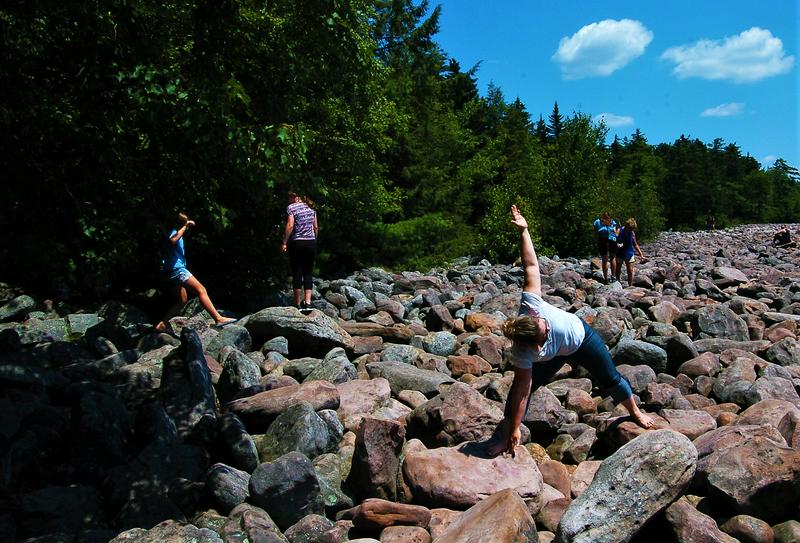Ringing Rocks of Pennsylvania: A Geological Mystery
By | October 2, 2018

Most of the time, when you hit a rock, it produces a loud thud noise. But in one mysterious place in Pennsylvania, the rocks don’t thud, they ring. In fact, you’d swear the rocks were not rocks at all but hollowed out chunks of metal. That’s because they sound distinctively bell-like when hit with a hammer. Although the odd rocks were well known to Native American tribes, they have baffled European settlers, scientists and geologists since the first settlers stumbled upon the area in the mid-1700s. Despite years of research, we still don’t know for certain why the Ringing Rocks of Pennsylvania ring.

There is a Scientific Name For Ringing Rocks
Although scientists don’t have a definitive answer as to why the rocks ring, they do have a name for ringing rocks. They are called with sonorous rocks or lithophonic rocks. These are the terms that are given to rocks that resonate with a bell-like sound when they are struck.

Ringing Rocks Can Be Found Across Pennsylvania
Although there were once several boulder fields with ringing rocks found across Pennsylvania, many of these areas are now located on private property or have been destroyed to make way for urban developments. There are, however, three sites that have been set aside as public parks. Visitors can go there to experience the ringing rocks for themselves. All three parks are north of Philadelphia. They are Ringing Rocks County Park, Stony Garden, and Ringing Hill Park.

Scientists Developed Theories
People began experimenting on Pennsylvania’s ringing rocks and they developed their own theories about why the rocks ring. A mineralogist from Lehigh University, Edgar Wherry believed that the ringing sound was produced due to the texture of the rocks and their arrangement on the boulder field. Geologist Richard Faas of Lafayette College took several ringing rocks back to his lab for testing. He noted that the rocks, when struck, emit a series of low-frequency sounds. Individually, these sounds are too low for the human ear to hear, but when the rocks are together in a boulder field, the sound resonates and becomes audible. While an interesting discovery, Faas’s work did not identify the mechanism that caused the ringing sound.

What We Know About the Rocks’ Ringing Ability
Numerous experiments have shown us that the size and shape of the rocks, as well as their proximity to other boulders, all impact the ringing sound that is produced. While people often point to the iron in the rocks as the source of the metallic sound, the ringing rocks are not higher in iron than average basalt rocks. Instead, the sound seems to be the result of the density of the rock and the degree of internal stress. When the rocks are slice into cross sections, they expand, proving that the rocks contain internal stress, or are tightly compressed. This compression seems to account for the ringing sound. It has been observed that rocks that are broken or severely weathered no longer ring, an observation that also seems to point to internal stress in the rocks as the reason for the sound.

Ringing Rocks Can Make Music
In 1890, Dr. John Ott of Pleasant Valley, Pennsylvania, presented a musical performance using the ringing rocks found at Stony Garden. He enlisted the help of a friend, William J. Buck, to build a lithophone, a musical instrument made using approximately 200 pounds of ringing rocks. Ott used a steel hammer and played a selection of songs including “Home Sweet Home” and his own composition, “Sounds from the Ringing Rocks”, accompanied by a brass band. The audience members noted that the lithophone produced a loud, clear bell-like sound that complemented the brass band.

Visitors Can Ring the Rocks Themselves
All three parks in Pennsylvania, Ringing Rocks County Park, Stony Garden, and Ringing Hill Park, welcome visitors to explore the boulder fields littered with ringing rocks. As long as guests are not destructive, they are welcome to ring the rocks themselves to experience the unique geological phenomenon for themselves.

